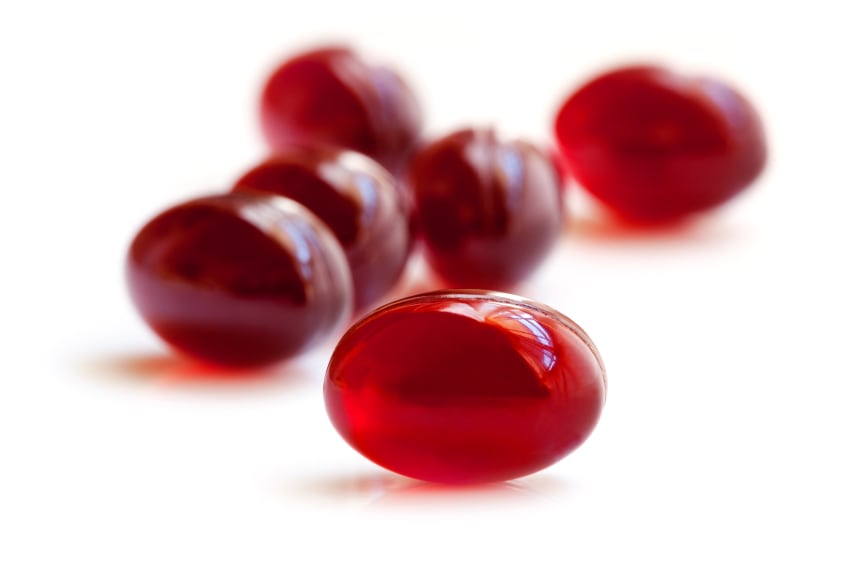New krill oil forms featuring higher phospholipid concentrations are being offered by three of the major krill oil suppliers: Neptune Technologies and Bioressources, Aker Biomarine and Olympic/Rimfrost. And Neptune has started offering some benefit-specific formulations as well that include added ingredients such as CoQ10, strontium, zinc, lutein and vitamins A, B1 and D.
“It’s clear that we have been underselling krill from the beginning,” John Cameron, managing director of Rimfrost told NutraIngredients-USA. “With these new higher phospholipid concentrations, it makes a real difference in the kind of health claims you can make with krill.”
Languishing in original form
For a number of years after its introduction as a dietary ingredient by Canadian pioneer Neptune, krill oil languished in its original, unconcentrated state even as a number of different forms featuring higher concentrations or custom EPA and DHA ratios started to show up among fish oils. One reason often given for this dearth of innovation was the millions of dollars devoted to patent litigation during the "krill wars" phase of the ingredient’s history. Another was the booming sales for the ingredient, with the Megared brand reaching the status of the best selling omega-3 SKU of all in the US market. Still a third reason was given by Melody Harwood, Neptune’s director of scientific and regulatory affairs. Krill oil was a new and chemically unique ingredient, and different enough from fish oils that lipid chemists had to pretty much start from scratch.
“It is true that there have not been as many novel krill oil products made available since the ingredient was first launched nearly a decade ago, particularly compared to the development of ethyl ester and triglyceride concentrates of fish oils. This is likely due to the majority of efforts of the krill oil suppliers being put into establishing composition and appropriate analytical methods for the ingredient, as krill ‘oil’ is more similar to a lecithin product and some of the methods used for traditional oils are not applicable to krill lipids,” she said.

Negative sales momentum
One reason for innovation is competitive pressure, to achieve product differentiation. Another is to better serve the needs of the consumer, and in this respect the new forms offered by suppliers can’t come soon enough. Recent data supplied by market research firm SPINS to NutraIngredients-USA shows that krill sales are off significantly in US market in the 52-week period ending in late March. In that time frame, SPINS data shows that krill sales in all channels—food/drug/mass, natural, and specialty/gourmet—dropped from $97 million to $86 million, a decline of 11.6%. One reason that has been postulated for the soft sales is the drop off in advertising support after Schiff Nutrition and its flagship Megared krill oil brand was acquired by English CPG giant Reckitt Benckiser. When asked in a recent earnings call with analysts what the size of the brand was now compared to when it was acquired, Reckitt Benckiser CEO Rakesh Kapoor refused to respond, but speculation is that sales have dropped significantly. The Schiff team had built the best selling omega-3 SKU in the US, but had done it via a massive advertising campaign, coattails on which the entire category was apparently happily riding.
Technical challenge
The phospholipid content of krill oil has been one of the ingredient’s big selling points, both from a bioefficiency and digestibility standpoint. Further concentrating those constituents has proved challenging, and required all three suppliers to move to new equipment and processes, Neptune at its rebuilt plant in Sherbrooke, Quebec, Rimfrost at its plant in New Zealand and Aker at its new facility in Houston, which Aker’s marketing director Becky Wright said is now the largest in the industry.
“Our ingredient Superba Two was developed using a new technology we acquired recently and put into place at the Houston plant. It’s called the Flexitech process and it both concentrates the phospholipids and helps to desalt the oil to remove the constituents that are associated with the off odors. This is ushering in a new phase of innovation for the category,” she said.
Concentrating on concentrations
All three suppliers are now offering phospholipid concentrations boosted from the base 40% up to 60%, and in the case of Neptune the concentrations can go even higher.
“New products could help in regaining market momentum, and particularly new delivery forms, as survey data indicate that consumers are demonstrating recognition and even preference of functional food-type products. Neptune is working on new delivery forms in collaboration with its Biodroga division which is specialized in product development,” said Jackie Khayat, Neptune’s sales director.
“Acasti Pharma, Neptune’s pharmaceutical subsidiary, is developing a prescription drug candidate, CaPre with 68% phospholipids. If approved, CaPre would compete in the hypertriglyceridemia market space where several products are being manufactured from high concentration omega-3 fish oil,” she said.
The suppliers now have the capability of increasing the EPA and DHA content as well, which was starting to become an Achilles heel for the ingredient. Even with the claims for better absorption and the undoubted better digestibility, some of the savviest consumers were starting to do the math on how much EPA and DHA were in the various sources of omega-3s and that started to reflect negatively on krill, which comes in at a premium price.
“We are in a new phase of krill, similar to what fish oil went through when they moved beyond the base 18:12 oils. This is the trajectory the market is taking, and in the future I think you will have specific grades of oils for specific applications,” Aker's Wright said.
